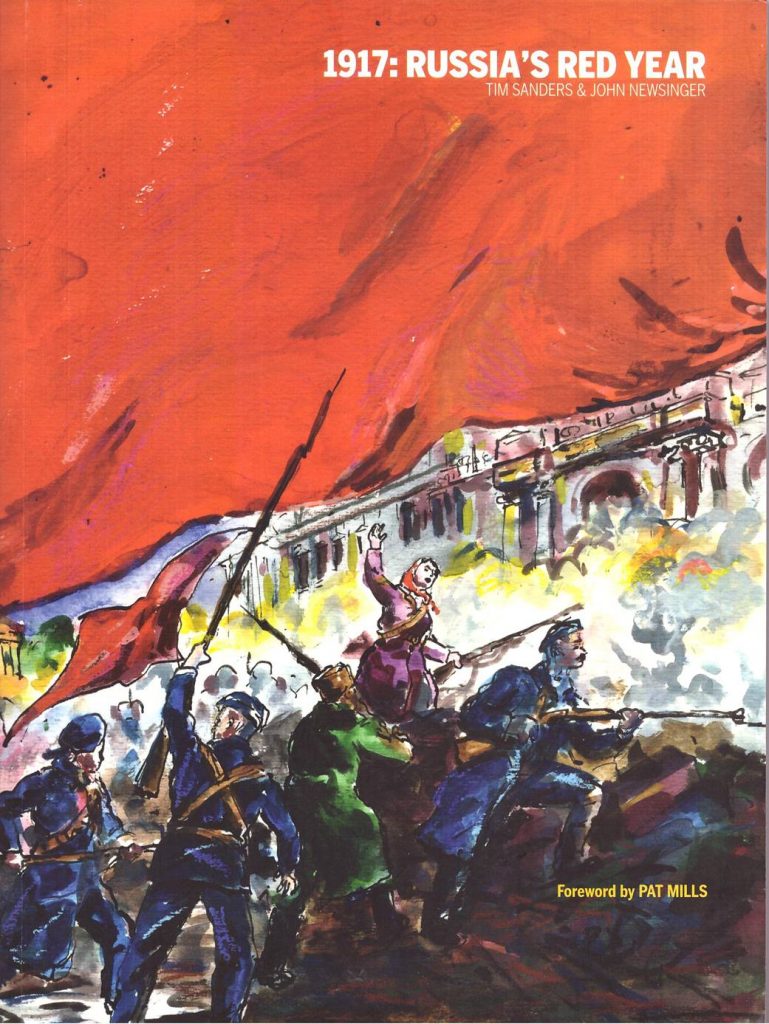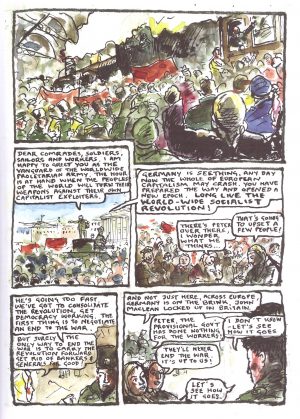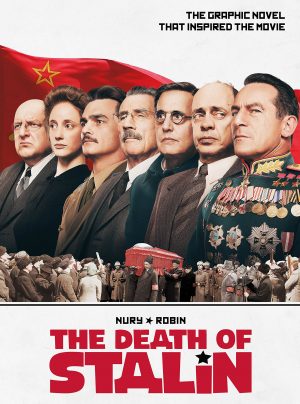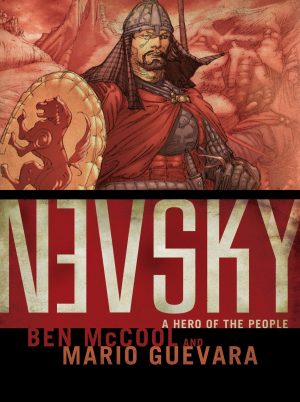Review by Frank Plowright
The 1917 Russian Revolution is the only 20th century case of a European monarchy ended from within to lasting effect, a massive popular uprising at the hardships enforced by Tsar Nicholas during World War I still having reverberations today. John Newsinger and Tim Sanders take us through the fundamental stages month by month throughout 1917 personalising the events by presenting them through the eyes of young revolutionaries Natalia and Peter.
It’s a major disappointment that such a well-meaning, educational project is so sabotaged by artist Sanders’ choices. A complaint about modern art is that it looks like something a child could have drawn, which is only ever rarely the case, but the deliberately naive style Sanders adopts has that look. The composition and detail are there, but almost lost in page after page of sketchy illustrations with ugly blobs of watercolour applied. Perhaps intended to accentuate the chaos, it looks like roughs, not finished artwork and prevents engagement. On a more technical level Sanders frequently picks the strangest moments to emphasise with a full page, while other events that could do with breathing space are compressed. Given the opportunity to supply the spectacular with the famous moment of the Aurora gunboat firing on a city, the image presented is a large black smudge with a few features in shadow. It looks as if Sanders spent all of five minutes on the page.
As the revolution has multiple strands and its own internal struggle, Newsinger has a complex picture to distil. This sometimes leads to blocks of political discussion, and quoting too extensively from Lenin, but Newsinger’s good at explaining how the revolutionaries saw themselves as allied to other workers across Europe, not a national flag, and the importance of support across Russia, not just in the cities. Splitting events clearly via calender months helps understanding of what were a chaotic succession of tumbling dominoes.
Much written about the Russian Revolution is terribly earnest, so Newsinger scores with moments of dark humour, particularly when he looks in on fears of the same occurring in Britain. Labour MP Will Thorne still holds the record for the largest percentage of the constituency vote in an election, but his address to Russian workers is a disaster. King George bemoans his loss of dignity when it’s suggested the OBE is introduced as a possible means of popularising the British monarchy.
Ultimately, no matter what Newsinger does, Russia’s Red Year fails emphatically on the art lacking any quality encouraging people to buy the book.





